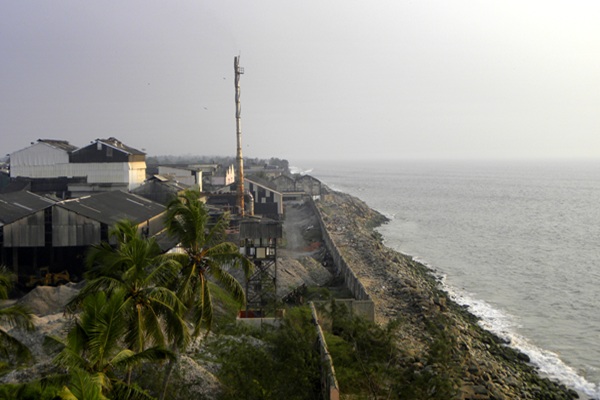.png)
China’s REM Squeeze Threatens India’s Auto Sector Revival
A looming rare earth magnet shortage could stall India’s EV dreams, reshape supply chains and test the push for manufacturing self-reliance.


Dhananjay Sinha, CEO and Co-Head of Institutional Equities at Systematix Group, has over 25 years of experience in macroeconomics, strategy, and equity research. A prolific writer, Dhananjay is known for his data-driven views on markets, sectors, and cycles.
July 9, 2025 at 9:50 AM IST
China’s rare earth magnet embargo risks sparking a disruptive supply chain crisis for India’s automotive sector, evoking the post-pandemic semiconductor shortage. Unlike the earlier disruption, which stemmed from natural disasters and prompted a collaborative global response, this is a calculated geopolitical move, with China weaponising its near-monopoly over rare earth magnet production.
Holding about 90% of the global market, China’s curbs leave countries like India exposed to collateral damage with no quick solution in sight. The automotive, electronics, and electrical sectors are all vulnerable, but electric vehicles and electric two-wheelers face the maximum exposure due to their dependence on neodymium-iron-boron magnets.
Rare earth magnets account for less than 5% of the cost of an electric passenger vehicle or scooter, but they are crucial for powering motors and other key components. India imports roughly 80% of these magnets from China. Channel checks reveal that auto manufacturers currently hold only 2–4 weeks of magnet inventory; Maruti Suzuki India Limited has sufficient stock until the end of July 2025, and Tata Motors reports comfort for the next few months.
If Chinese restrictions persist, production delays seem inevitable, particularly for battery electric vehicle programmes. Industry estimates suggest it will take at least six months to normalise supply chains even if negotiations between the US and China ease tensions, which remains uncertain.
The pricing impact is already apparent. Channel checks suggest price hikes of 5–8% for electric vehicles and scooters, translating to an additional ₹8,000–12,000 for a ₹150,000 scooter. This compounds pressures in the passenger vehicle market, where inventory levels have risen to 52–53 days of sales compared with a typical 30–35 days, reflecting softer domestic demand. While elevated stock levels may provide a short-term cushion, they also erode manufacturers’ pricing power and force deeper dealer discounts. A prolonged magnet shortage might allow dealers to reduce discounts, but manufacturers are unlikely to see significant margin benefits until inventories clear.
India’s dependence on Chinese rare earth magnets underscores a deeper vulnerability. The country has an estimated 6.9 million tonnes of rare earth element reserves, but these are mainly light REEs that are unsuitable for high-performance magnets.
The government is working to reduce this dependence by supporting local production through organisations such as Indian Rare Earths Limited and the Bhabha Atomic Research Centre. Yet experts warn that developing a competitive domestic supply chain could take seven to ten years, with challenges ranging from mining and processing technology to qualification with automotive manufacturers.
Epsilon Carbon, a component manufacturer, notes that securing technological scale and OEM approvals could take four to five years, with an additional two years to establish production facilities.
In the meantime, the government is exploring production-linked incentives and public-private partnerships to boost indigenous magnet production. Companies like IREL, Entellus, and Midwest Advance Material are engaging with policymakers to develop local capacity, though timelines for commercial production remain vague.
Recycling offers another route. Attero, an e-waste recycling firm, is investing ₹1 billion to scale its rare earth recycling capacity from 300 tonnes to 30,000 tonnes within one to two years. Globally, automakers such as Ford are targeting 90% neodymium recovery through magnet recycling in their 2025 strategies, signalling a shift toward sustainable alternatives.
Alternative international sources exist in Australia, Latin America, Vietnam, and Indonesia, but remain underdeveloped, demanding significant capital and time to bring online.
For now, India’s automotive industry remains vulnerable. While internal combustion engine vehicles account for 93% of sales and offer a buffer, even they use magnets for motors, power steering, and wipers. A prolonged shortage could see manufacturers prioritising ICE production over EVs, delaying electrification goals.
The impact will vary by manufacturer. Premium passenger vehicle and EV-focused players such as Mahindra & Mahindra, Hyundai, and Tata Motors face greater exposure. Maruti Suzuki, by contrast, is relatively insulated, with a dominant position in low- and mid-end ICE segments.
Among two-wheeler makers, EV-focused firms like Ola Electric and Ather are most vulnerable, while Honda, Hero MotoCorp, and TVS Motor are less affected, given their modest EV shares. Bajaj Auto, with about a 15% EV share, faces moderate risk. Tractor manufacturers such as Escorts and Mahindra & Mahindra remain largely insulated, given minimal rare earth magnet use.
Looking ahead, the embargo could reshape India’s automotive sector. JATO Dynamics India estimates production delays of two to six months if restrictions persist, with pricing and market dynamics also set to shift. Any potential easing of Chinese controls may come at a cost, such as allowing greater market access for Chinese EV manufacturers in India, which would intensify competition in the premium and electric segments.
In the long run, India’s push for self-reliance through domestic mining, recycling, and alternative sourcing is necessary but demands patient capital and sustained effort. For now, the industry faces a period of uncertainty, with electric mobility bearing the brunt of this renewed supply chain squeeze.



